- A biography published by the Royal Society shortly after Turing's death
- Since 1966, the Turing Award has been given every year by the Association for Computing Machinery. It is considered to be the computing world's highest honor, equivalent to the Nobel Prize.
- Breaking the Code is a 1986 play by Hugh Whitemore about Alan Turing
- On June 23 1998, on what would have been Turing's 86th birthday, his biographer, Andrew Hodges, unveiled an official English Heritage blue plaque at his birthplace and childhood home Warrington Crescent, London.
- In 1994, a stretch of the A6010 road (the Manchester city intermediate ring road) was named "Alan Turing Way".
- A statue of Turing was unveiled in Manchester on June 23 2002 om Sackville Park.
- In 1999, TIme Magazine named Turing as one of the 100 most important people of the 20th century.
- In 2002, Turing was ranked twenty-first on the BBC nationwide poll of the 100 greatest britons.
Alan Turing was truly a great man. He changed so many things and if it weren't for him, I would not be blogging this right now. Everyone who opens a word document and types away at a keyboard, or clicks to another tab, or uses any computer system, owes thanks to Turing for these things would not exist if he had not pursued mathematics and cryptology. If it were not for him we might not have won the war if he had not decrypted the Enigma code. Turing's brilliant mind has advanced our technology greatly. Although Turing changed things so deeply, he was punished for loving someone of the same gender. Turing was wronged, and I must say to him, I am sorry for what they had done to you, and thank you for everything you have done for us.
On June 8, 1954, Turing's cleaner found him dead. He had died the day before. The cause of death was cyanide poisoning. When the body was found, an apple lay half-eaten beside his bed, although the apple was not tested for cyanide, it was speculated that this was how the fatal dose was consumed. The suspicion was strengthened when his fascination with Snow White and the Seven Dwarfs was revealed. They determined that he had committed suicide. Turing was cremated at Working Crematorium on June 12 1954. Turing's ashes were scattered there, just as his father's had been.
In January 1952, I started a relationship with Arnold Murray, a 19-year-old unemployed man. I met Murray just before Christmas outside the Regal Cinema when walking down Manchester's Oxford Road and invited him to lunch. On January my house was burgled. Murray told me that the burglar was an acquaintance of his, and I reported the crime to the police. During the investigation I told of my relationship with Murray. During that time homesexual acts were illegal in the United Kingdom, and we were both charged with indecency under Section 11 of the Criminal Law Amendment Act 1885. The trial happened on February 27, where I pleaded "guilty" although I felt no remorse for what I had done. I was given a choice between imprisonment and probation if I agreed to take treatment designed to reduce libdo. I took treatment injection of stilboestrol and oestrogen for one year.
Following my work in the Bell Labs in the US, I chased my idea of electronic enciphering in speech of the telephone system. In the later part of war I moved to work for the Secret Service Radio Security Service at Hanslope park. There I developed further knowledge of electronics with the help of the engineer Donald Bayley. Together we undertook the job of designing and constructing a secure voice communications machine called Delilah. It was intended to do many things but it wasn't able to be used for long distance radio transmissions and was built too late to be used in the war. Though the system did work, and I demonstrated it to officials by encrypting and decrypting a recording of Winstion Churchill.
I decided to take on the problem of German naval Enigma because no one was doing anything about it and I could have it to myself. In December 1939 I solved part of the naval indicator system, which was very complex. On the same night I also thought of the idea of Banburismus, a technique to help breaking the naval enigma, though I was not sure it would work in practice, and was not in fact sure until somedays had actually broken. For this I invented a device called the Ban, which measured weight.
I traveled to the United States in November of 1942 and worked with the US Navy cryptanalysis on Naval Enigma and bombe making in Washington. I visited their Computing Machine Laboratory at Dayton, Ohio and I was far from enthusiastic: It seems a pity for them to go out of their way to build a machine to do all this stopping if not necessary. I am now converted to the extent of thinking that starting from scratch on the design of a Bombe, this method is about as good as our own The American Bombe program was to produce 336 bombes, one for each wheel order. I used to smile inwardly at the conception of test of commutators can hardly be considered conclusive as they were not testing for the bounce with electronic stop finding devices. From 1945 to 1947, I lived in Richmond, London while I worked on the design of the Automatic Computing Engine (ACE) at the National Physical Laboratory. On February 19 1946 I presented my design of a stored-program computer. In the late 1947 I returned to Cambridge for a year where I worked on Intelligent Machinery. While I was at Cambridge the Pilot ACE was being built, and it's first program was started on May 10, 1950.
In 1948 I was appointed Reader in the Mathematics Department at the University of Manchester. In 1949 I became Deputy Director at the Computing Laboratory there, working on software for the earliest stored program computers, the Manchester Mark 1. In "Computing machinery and intelligence" I talked about the problem of artificial intelligence, and made an experiment which became known as the Turing Test. My idea was that a computer could be said to "think", if a human could not tell it apart through conversation, from another human. From September 1938, I had been working part time at the GC&CS , the british code breaking organization. I worked on the cryptanalysis of the Enigma with Dilly Knox, a senior code breaker. After the July 139, Warsaw meeting with the Polish Cypher Bureau provided details of writing the Enigma rotors. I and Knox started to work on a new approach to the problem.
On September 4, 1939, the day after the UK declared war on Germany, I went back to Bletchley Park. Some of the cryptanalytic advances I made during the war were:
In 1936, I went to Princeton University in America. Here I studied in mathematics and also built three of four stages of an electro mechanical binary multiplier. In June 1938 I got my PhD from Princeton. I returned to Britain soon after.
During World War II I began to work secretly part-time for the British cryptanalytic department, the Government Code and Cypher School, at Bletchley Park. The GC&CS was Britain's code breaking center. When the outbreak of the war started I took up full-time work at it's headquarters. For a time I was head of Hut 8, the section responsible for German naval cryptanalysis. I studied mathematics at Cambridge University. At Cambridge I gained my first class honors in mathematics After going to school there, eventually I taught at the school. There I worked in quantum mechanics. It was at Cambridge that I developed proof that automatic computation could not solve all mathematical problems. This concept was called the Turing machine, and is known for the modern theory of computation.
|
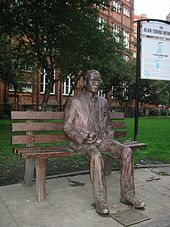
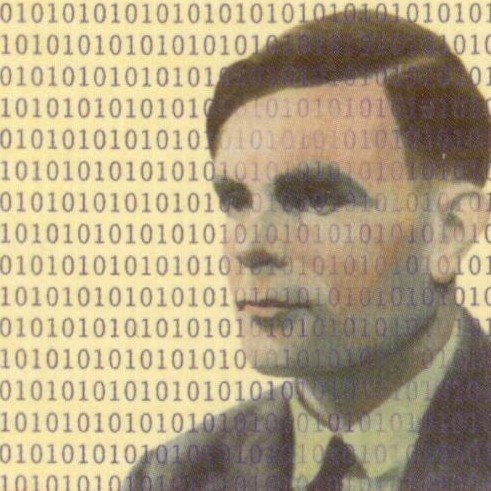


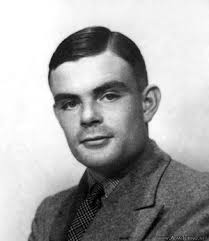

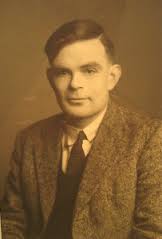
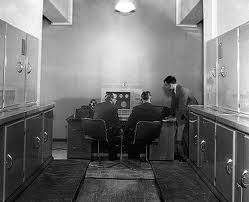

 RSS Feed
RSS Feed